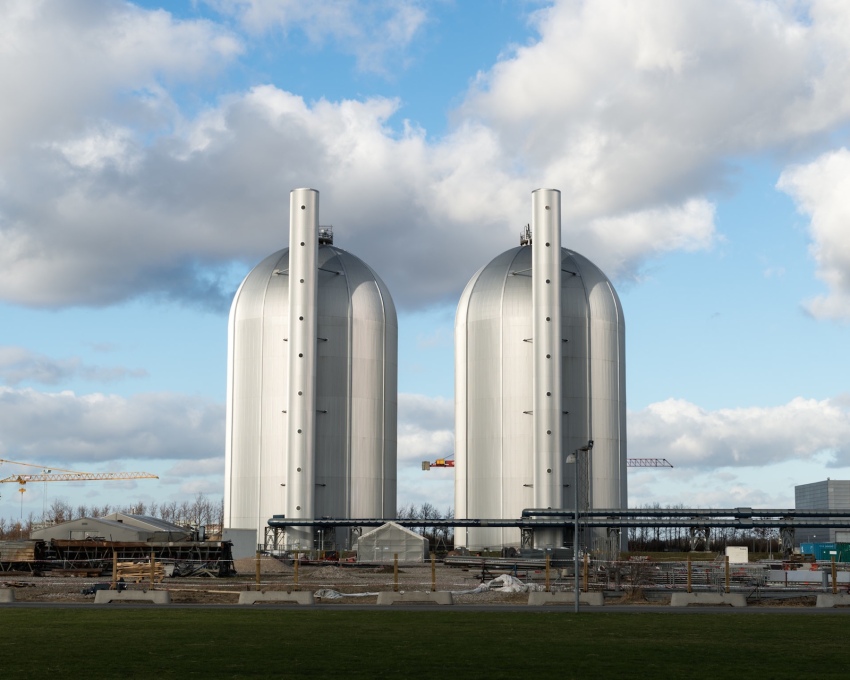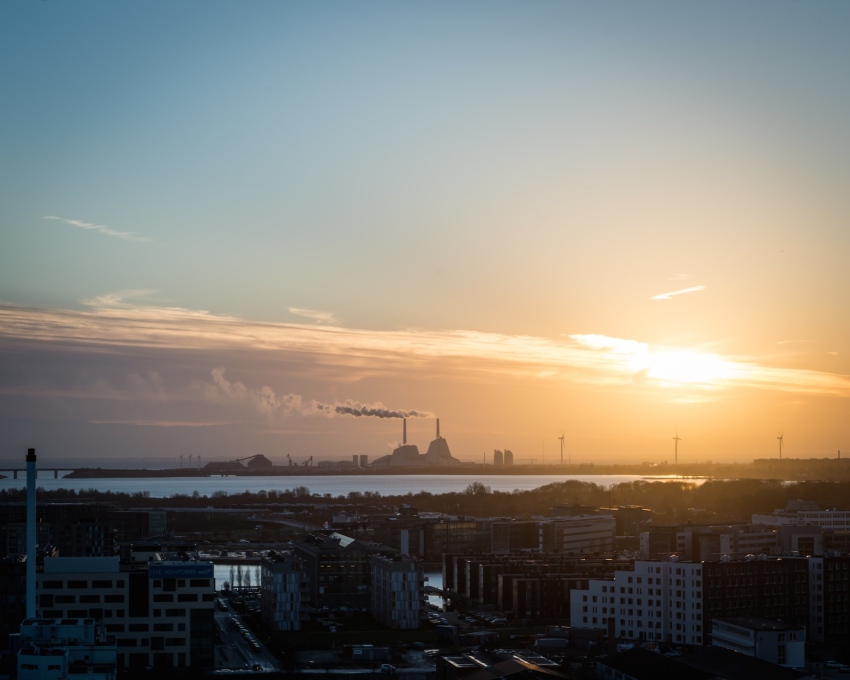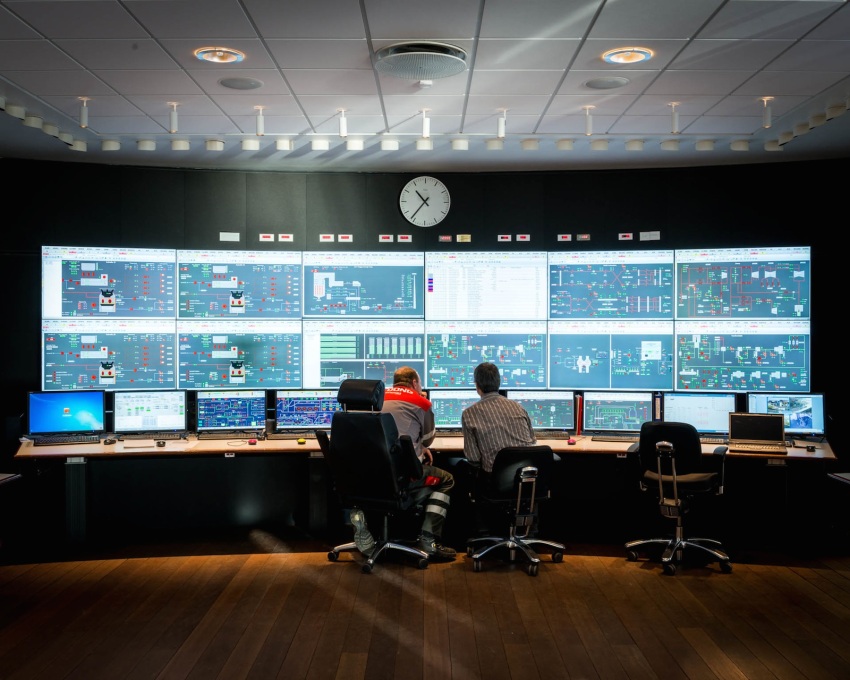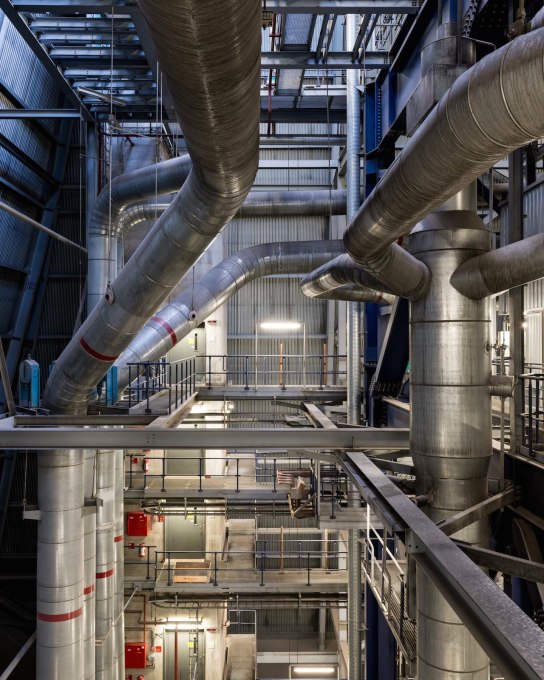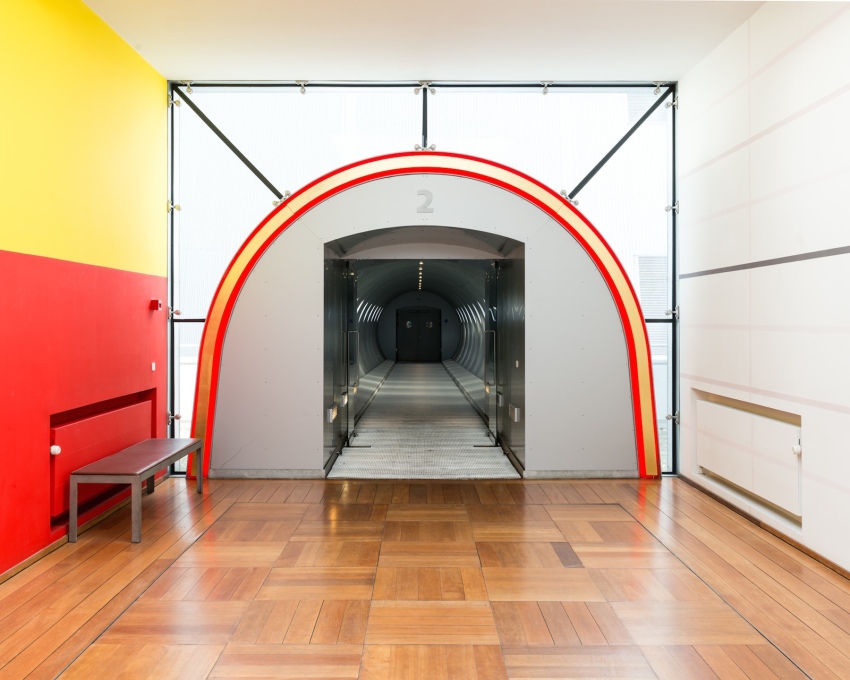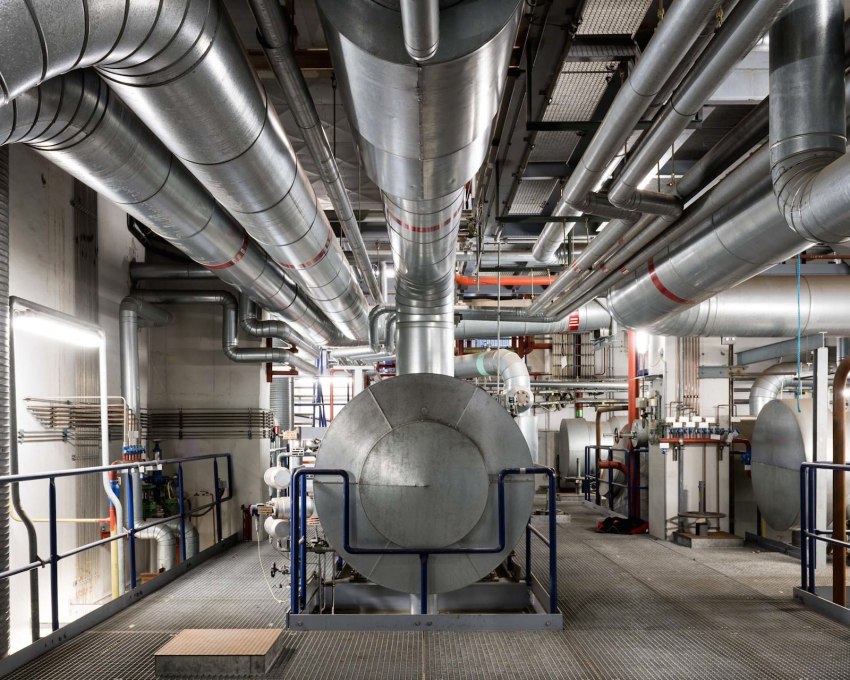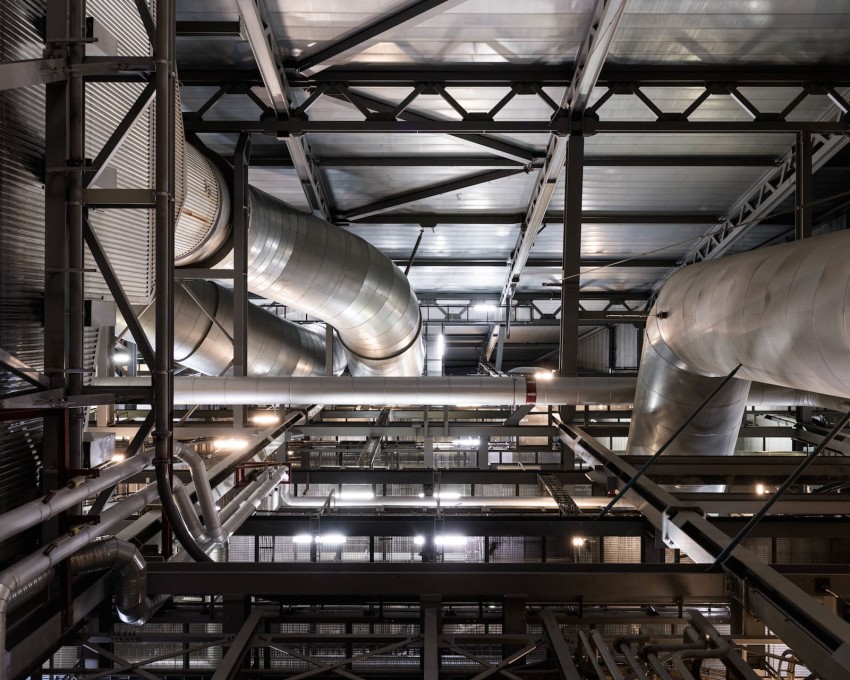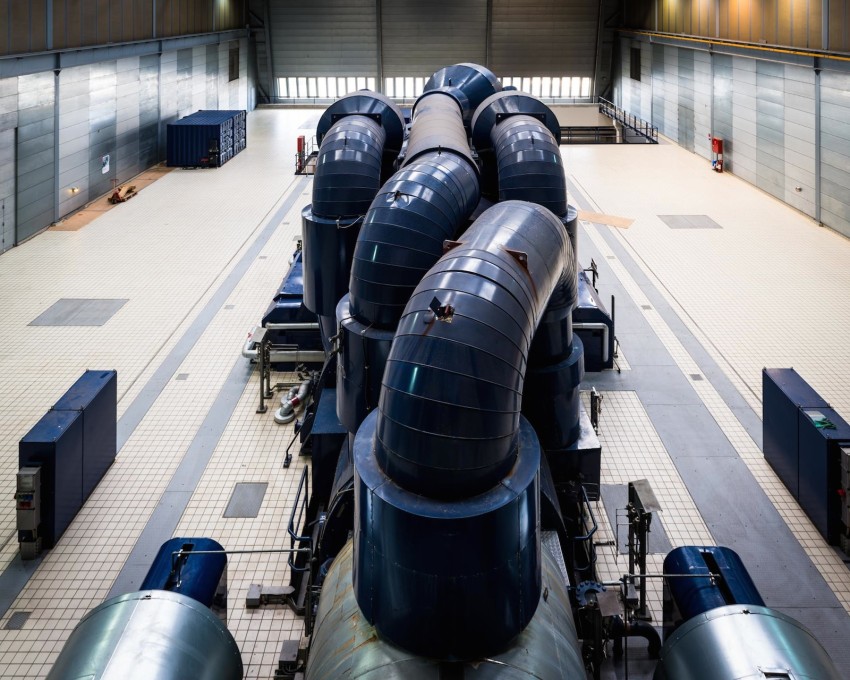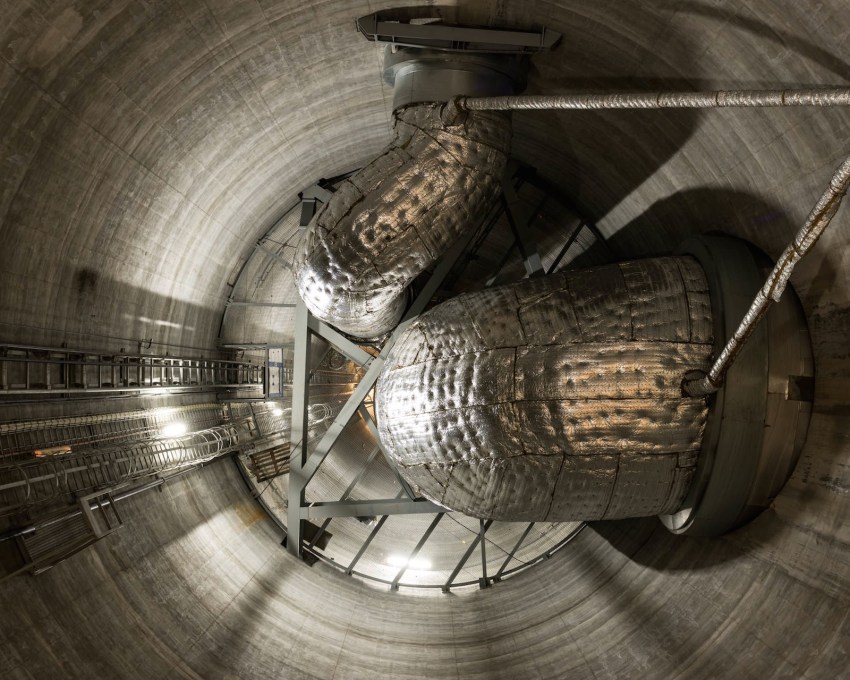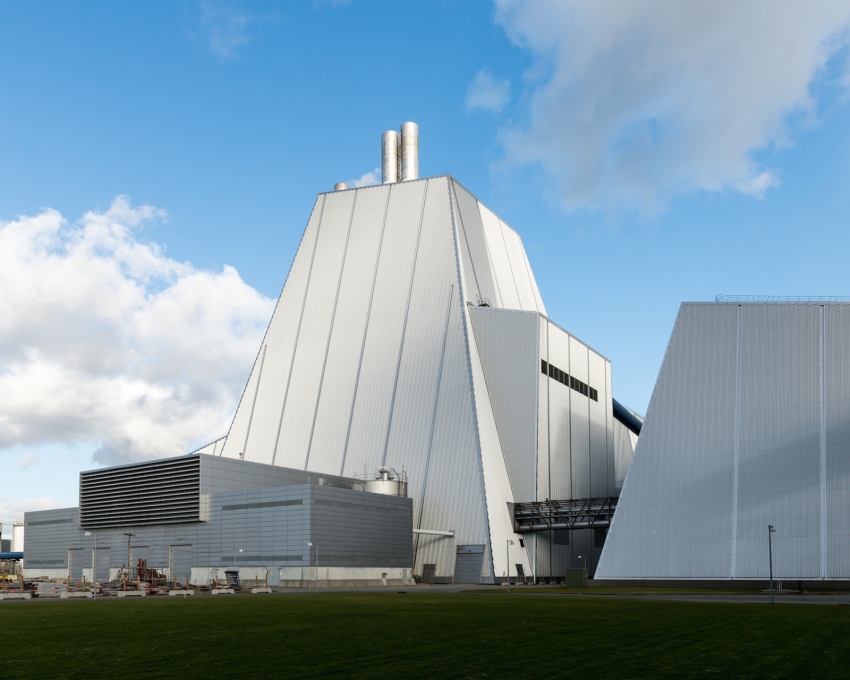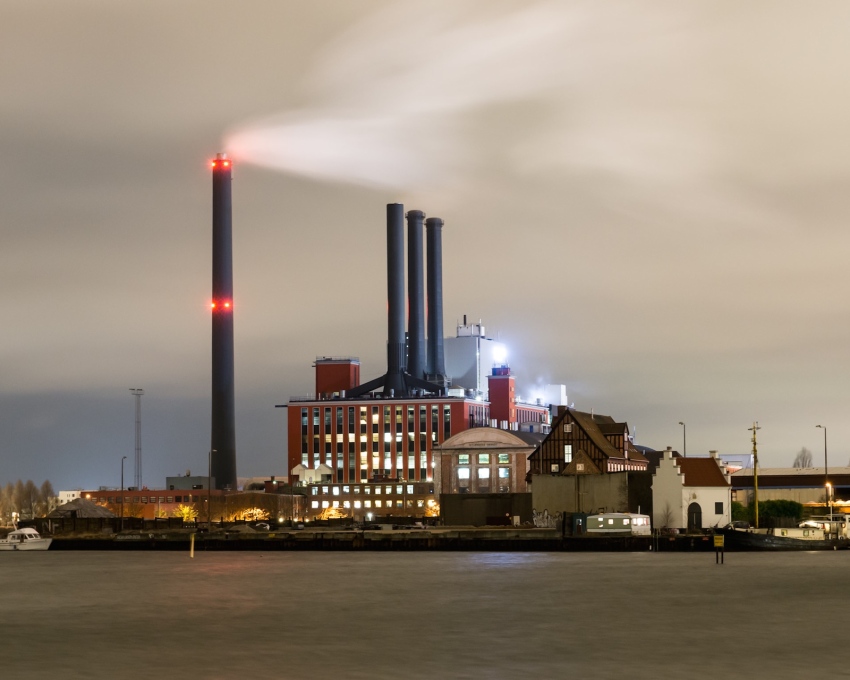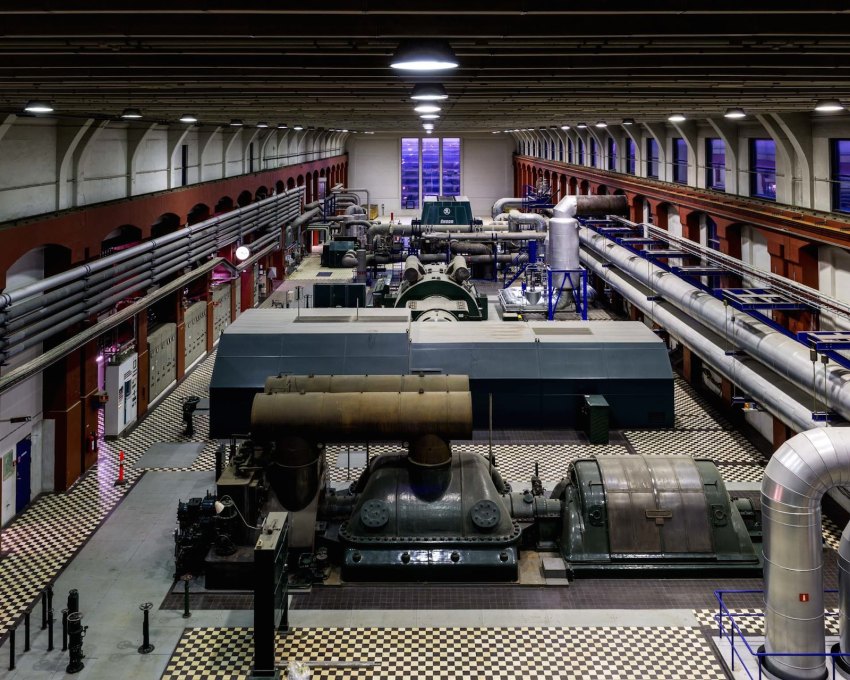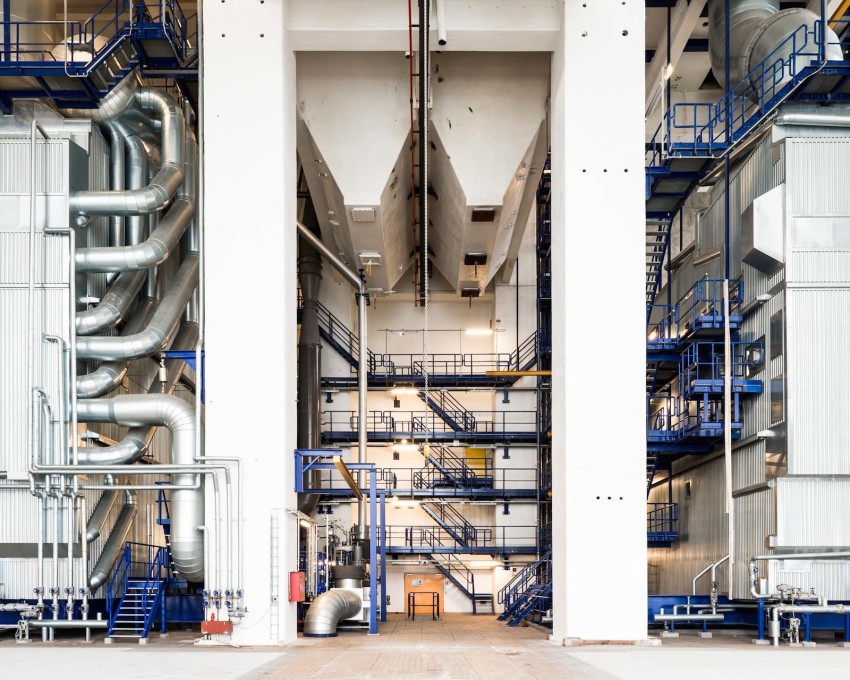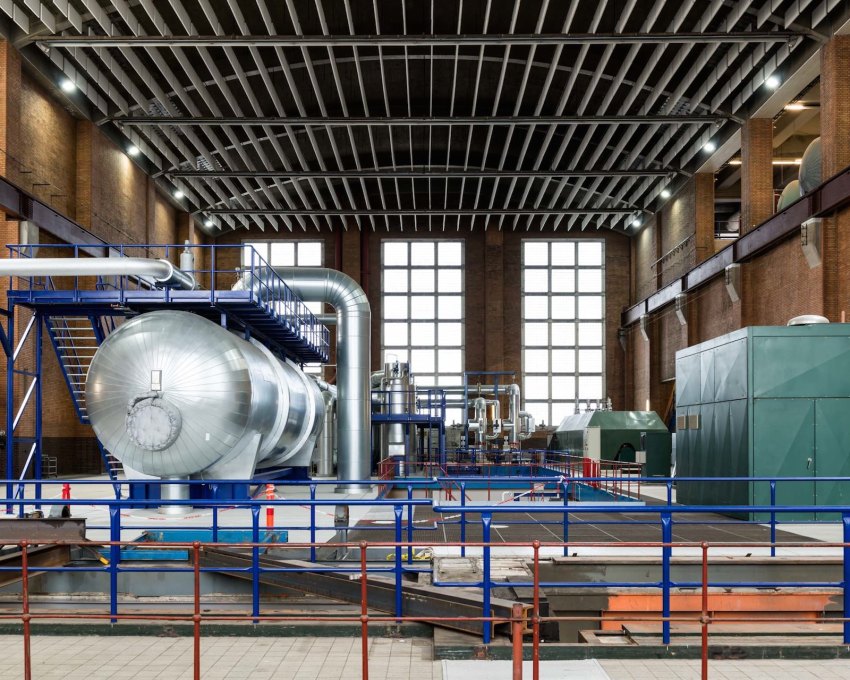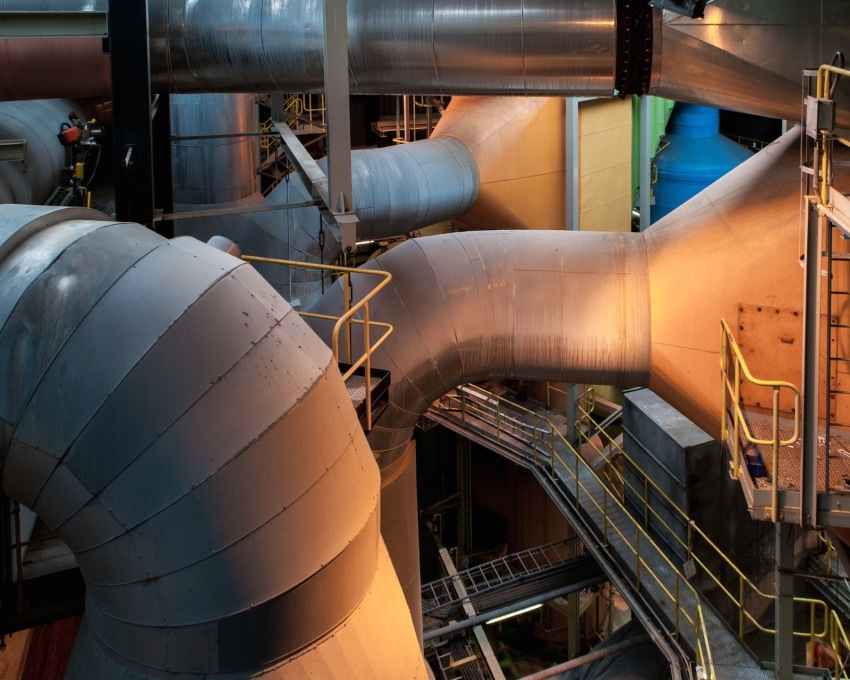The British photographer Alastair Philip Wiper is based in Copenhagen, where one of his photographic series documents the changing shapes of Denmark’s functional buildings – like power stations and incineration plants – over different eras. As our building of the week, Wiper selected the Avedøreværket power station, which sits on the skyline of Copenhagen’s harbour, from this series. He explains what he thinks we can learn about beauty and function from buildings like this.
The first time I noticed the Avedøreværket power station, was just after I had moved to Copenhagen around ten years ago. I was cycling over a bridge near the city harbour when I glimpsed the sun setting behind its two distinctive units. There was something epic about the station, something sci-fi. It not only produced power, but it exuded power in its form.
Avedøreværket is a monument on the city’s skyline, visibly reminding the citizens of Copenhagen daily of the source of their heat and electricity. Designed by architects Claus Bjarrum and Jørgen Hauxner, it is located in the suburb of Avedøre to the south of the city. The structure consists of two separate units: Avedøre 1, from 1990, burns mostly coal and sometimes oil, and can reach an energy conversion efficiency of 91 percent; Avedøre 2, from 2001, burns a wide range of fuels including natural gas, straw, wood pellets and heavy fuel oil.
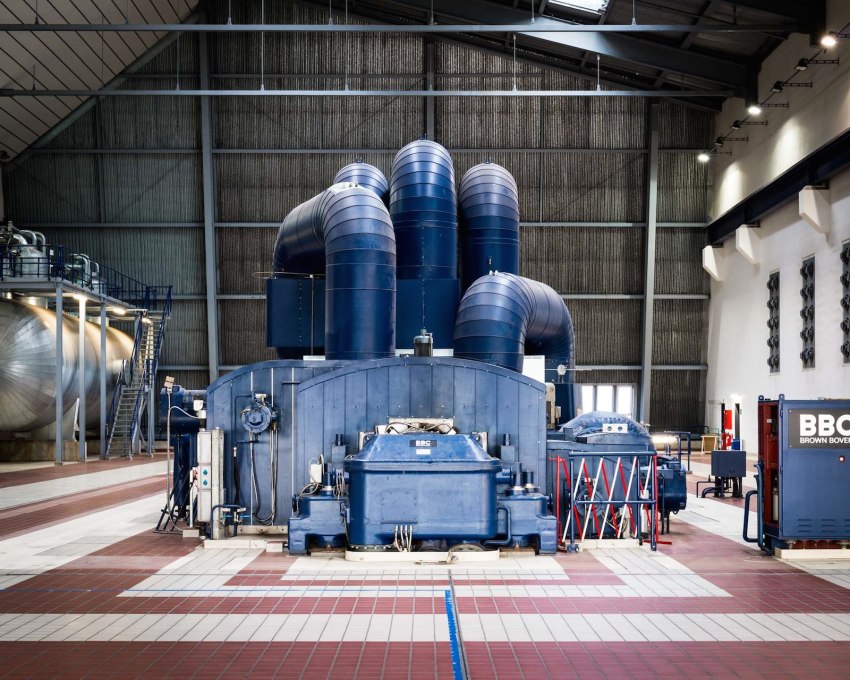
Watching this huge power station being fed with bales of straw is a strange experience – the meeting of an ancient symbol of agriculture and a marvel of modern engineering. It’s a marvel partially because of its efficiency: Avedøre 2 can reach an energy conversion efficiency rate of 94 percent, one of the best rates in the world. It’s also marvellous in terms of scale. Both units supply a combination of electricity and district heating in the form of hot water, and according to the owner of the station, Dong Energy, it “supplies 200,000 households with heat and generates…the annual electricity consumption of around 1.3 million households.”
Avedøreværket represented a moment of historical shift in Denmark, when the aesthetics of functional architecture such as power plants returned to the fore after decades of relatively unimpressive buildings. One of my photography projects is documenting the various power stations and waste incineration plants that supply heat and energy to Copenhagen, and in my photographs it’s possible to see this change in attitude over time.
I have photographed the statuesque power stations H.C. Ørstedsværket (1920) and Svanemølleværket (1953), which were built at a time when planners clearly thought that such utilitarian buildings should still aspire to beauty and architectural integrity. Yet in my photographs of the 1970s incineration plants Vestforbrænding and Amagerforbrænding, one can tell that very little or no thought was given to the external architecture above its practical purpose (although the interiors of the technical areas are painted bright, primary colours). The Avedøreværket power station clearly marks a point where the formal aspects of such facilities became important again.
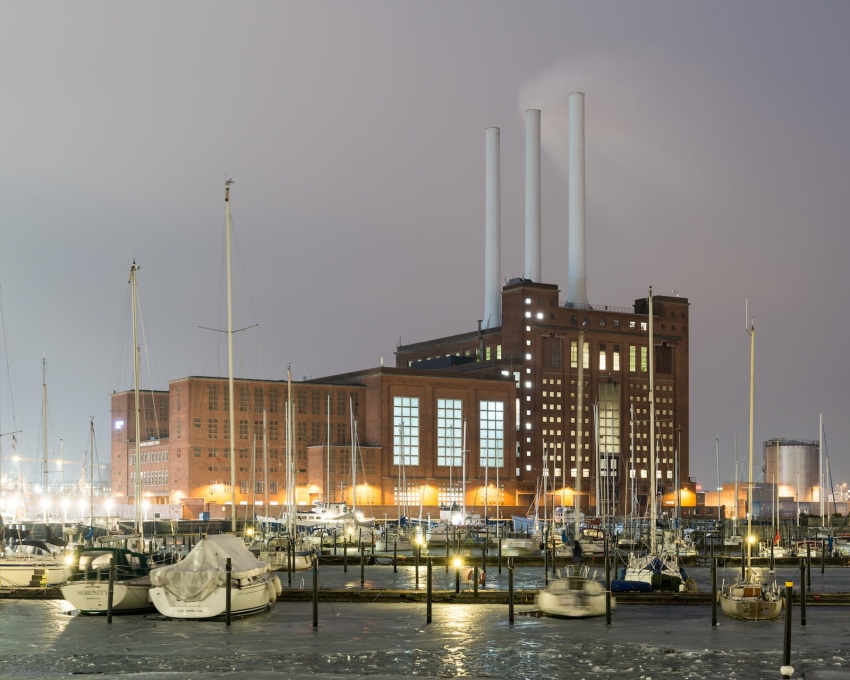
Today, the not-strictly-functional qualities of functional buildings are being taken to new extremes – take BIG’s plans to build a ski slope wrapped around the newly designed Amagerforbrænding incineration plant in Copenhagen. And the recently opened incineration plant in the city of Roskilde, designed by Erick van Egeraat, has a spotty perforated façade that lights up at night as though it has a fire burning inside. It seems the approach to industrial architecture has taken a turn for the extravagant and even the decorative.
That’s why, though it’s hard to say I love Avedøreværket’s design, I certainly don’t hate it either. It might have been a hell of a lot worse.
– Alastair Philip Wiper is a photographer working with the weird and wonderful subjects of industry, science and architecture. @alastairwiper
www.alastairphilipwiper.com




